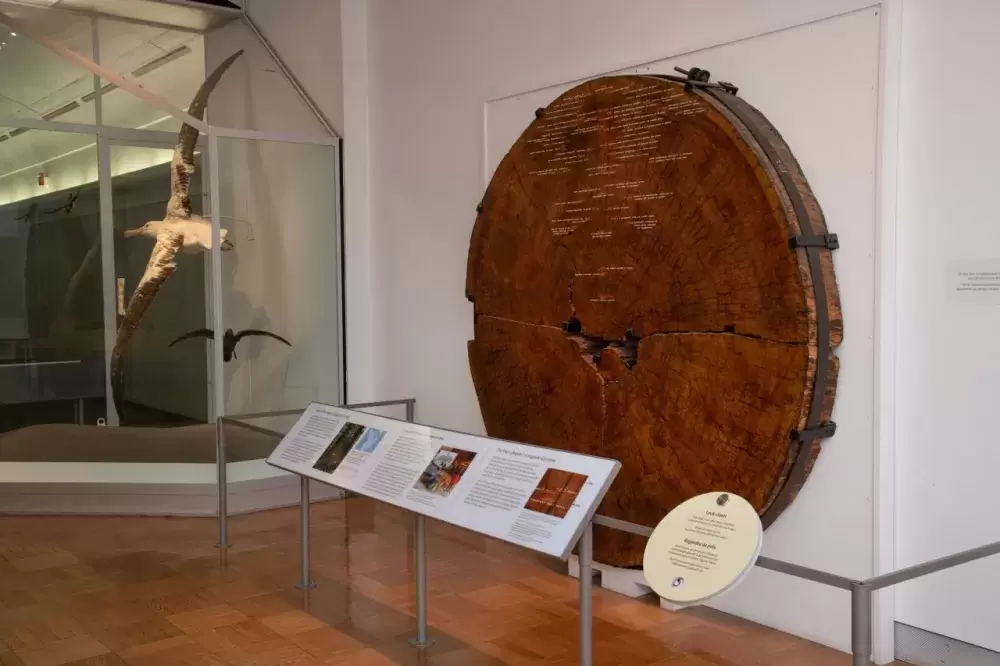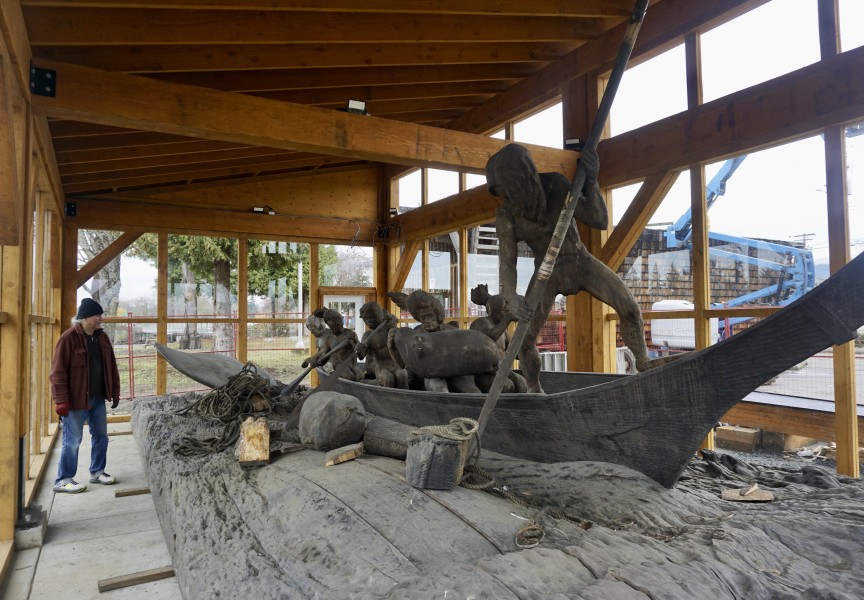An ancient Douglas fir old growth slice in the Royal Ontario Museum is getting reinterpreted with a more Indigenous flare.
The piece was sitting in the Ontario Museum since 2011, and it wasn’t until recently that a guest had pointed out a mistake. It had said that Christopher Columbus had ‘discovered’ North America, but that is not true.
The Royal Ontario Museum acknowledged their mistake, and corrected it so it now says, “Christopher Columbus did not discover America. He had arrived on land that had been inhabited by Indigenous peoples since time immemorial.”
The slice of the old growth, which is named as the “Tree Cookie”, has a 2.3 metre radius. It was estimated to be over 500 years old when it was cut down on the coast of British Columbia in the 1890’s. Painted over top of its many rings, is a timeline of what happened in North America over the stage of the trees’ lifespan.
But for the Royal Ontario Museum staff and their Indigenous Advisory Group, it didn’t feel like enough. With the help of Tseshaht members Darryl Ross Sr, Willard Gallic, and Gordon Dick, the ROM was able to re-work the idea of the Tree Cookie, with a different Nuu-chah-nulth perspective.
Hishook-ish Tsawalk is a Nuu-chah-nulth phrase, meaning “everything is connected”. Douglas fir was used by Indigenous peoples often, though it wasn’t as embraced as cedar was. Before European contact, firs were used mostly as a heat source, but also were used for carving, housing, ceremonies, and the pitch from the trees were used to help construct canoes.
Ross, Gallic and Dick helped the Ontario Museum with a quick info-video, where the three talk about traditionally balanced ecosystems, and a Nuu-chah-nulth historic perspective of tree conservation, and how important its purpose was.
“Everything is connected,” Gallic says in the video, “everything has a purpose.”
Historically, the tall fir and cedar trees were told that they ‘held up mountains’. They protected the fish in streams and rivers, held life in their branches.
“The (Royal Ontario Museum) had sought out our Nuu-chah-nulth perspective,” Ross said to Hashilthsa.
He emphasizes the importance of looking after our forests, the Hishook-ish Tsawalk practice.







